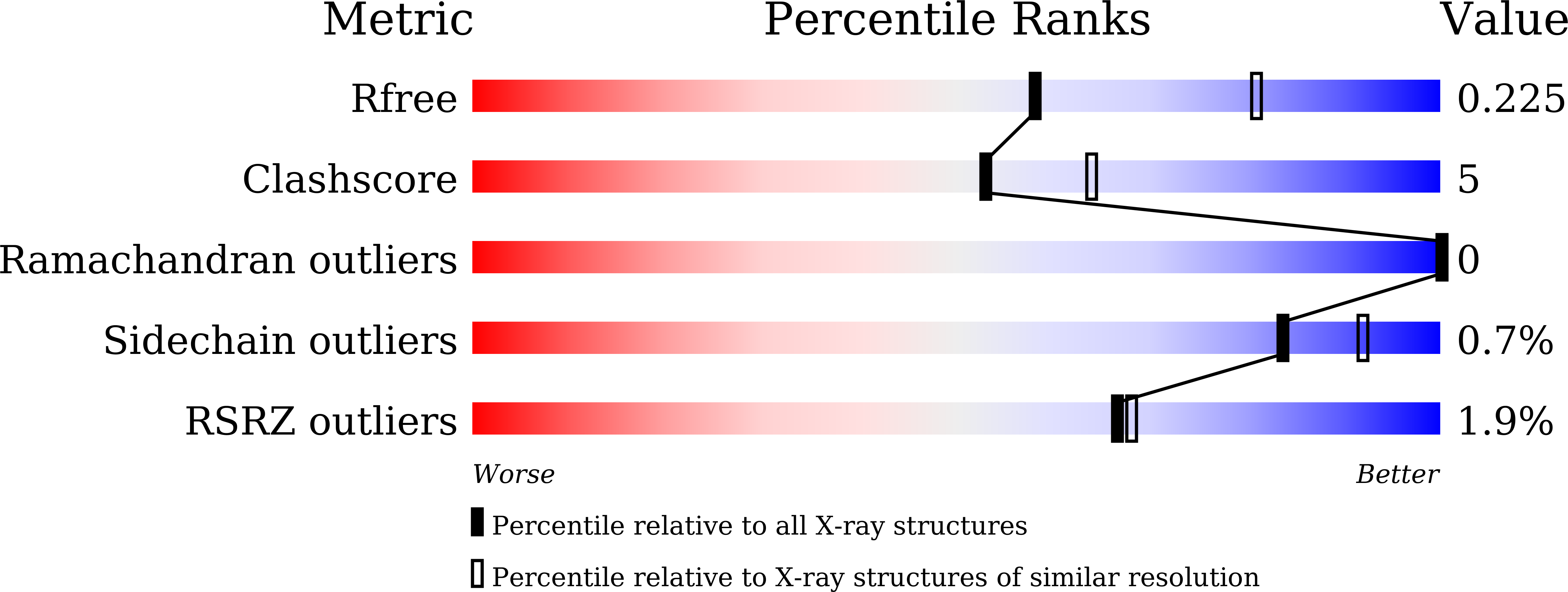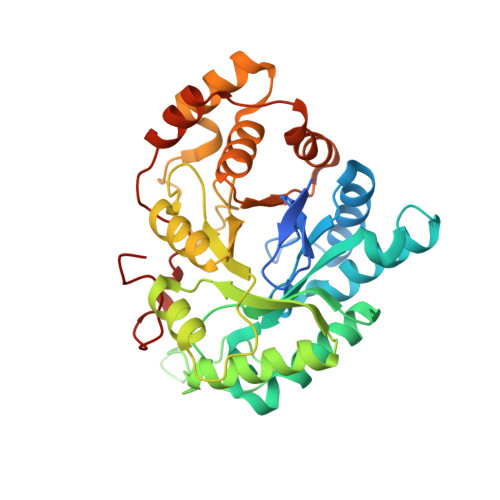Screening, synthesis, crystal structure, and molecular basis of 6-amino-4-phenyl-1,4-dihydropyrano[2,3-c]pyrazole-5-carbonitriles as novel AKR1C3 inhibitors.
Zheng, X., Jiang, Z., Li, X., Zhang, C., Li, Z., Wu, Y., Wang, X., Zhang, C., Luo, H.B., Xu, J., Wu, D.(2018) Bioorg Med Chem 26: 5934-5943
- PubMed: 30429100
- DOI: https://doi.org/10.1016/j.bmc.2018.10.044
- Primary Citation of Related Structures:
6A7A, 6A7B, 6IJX - PubMed Abstract:
AKR1C3 is a promising therapeutic target for castration-resistant prostate cancer. Herein, an evaluation of in-house library discovered substituted pyranopyrazole as a novel scaffold for AKR1C3 inhibitors. Preliminary SAR exploration identified its derivative 19d as the most promising compound with an IC 50 of 0.160 μM among the 23 synthesized molecules. Crystal structure studies revealed that the binding mode of the pyranopyrazole scaffold is different from the current inhibitors. Hydroxyl, methoxy and nitro group at the C4-phenyl substituent together anchor the inhibitor to the oxyanion site, while the core of the scaffold dramatically enlarges but partially occupies the SP pockets with abundant hydrogen bond interactions. Strikingly, the inhibitor undergoes a conformational change to fit AKR1C3 and its homologous protein AKR1C1. Our results suggested that conformational changes of the receptor and the inhibitor should both be considered during the rational design of selective AKR1C3 inhibitors. Detailed binding features obtained from molecular dynamics simulations helped to finally elucidate the molecular basis of 6-amino-4-phenyl-1,4-dihydropyrano[2,3-c]pyrazole-5-carbonitriles as AKR1C3 inhibitors, which would facilitate the future rational inhibitor design and structural optimization.
Organizational Affiliation:
Key Laboratory of Molecular Target & Clinical Pharmacology, School of Pharmaceutical Sciences & the Fifth Affiliated Hospital, Guangzhou Medical University, Guangzhou 511436, China.
















